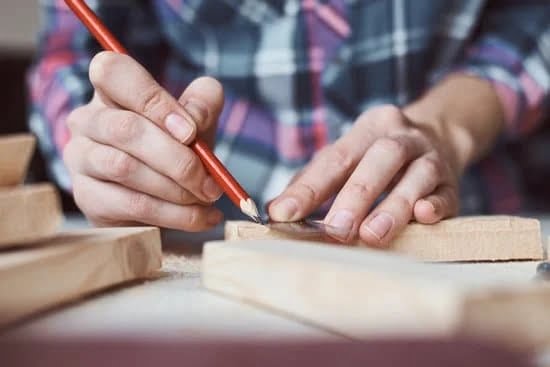Crazed woodwork refers to the presence of small cracks or fissures on the surface of wood, which can compromise its structural integrity and aesthetic appeal. When faced with crazed woodwork, many homeowners and DIY enthusiasts often wonder if they can use drywall primer as a solution. Drywall primer, commonly used in construction and renovation projects, serves as an important preparatory step for painting walls. However, its effectiveness on wood surfaces experiencing crazing remains a topic of debate.
Before exploring whether drywall primer can effectively address crazed woodwork, it is important to have a clear understanding of what crazed woodwork entails. Crazing occurs when the moisture content within the wood fluctuates significantly, causing stress to build up and resulting in small cracks on the surface. This phenomenon can be caused by various factors such as changes in humidity levels or improper drying techniques during woodworking.
To maintain the longevity and stability of wood surfaces, addressing crazed woodwork becomes crucial. This is where the potential use of drywall primer comes into play. Drywall primer is a type of coating designed to seal and prepare wall surfaces before applying paint or other finishes. It helps to create a smooth and even foundation for better paint adhesion and durability.
In this article, we will delve deeper into understanding what exactly crazed woodwork is and explore the primary purpose and benefits of using drywall primer. We will also discuss whether using drywall primer on crazed woodwork is a viable solution or if there are alternative remedies available. Additionally, we will provide practical tips for preparing the wood surface before applying drywall primer and outline proper application techniques for achieving optimal results.
Understanding Crazed Woodwork
Crazed woodwork, also known as cracked or checkered wood, refers to the formation of fine cracks on the surface of wooden materials. This condition can occur due to various factors, including fluctuations in humidity and temperature, age and natural drying processes of the wood, or improper installation and finishing techniques. It is important to understand the causes and signs of crazed woodwork in order to effectively address and preserve the integrity of the wood.
One common cause of crazing is improper moisture management. When wood absorbs moisture from its surroundings, it expands. Conversely, when it dries out, it shrinks. These constant changes in size can lead to stress within the wood fibers, resulting in cracks on the surface. Additionally, exposure to direct sunlight or extreme temperatures can further accelerate this process.
Signs and symptoms of crazed woodwork are typically visually noticeable. They may include small hairline cracks running parallel or perpendicular to the wood grain, as well as a general roughness or unevenness in texture. If left unaddressed, these cracks can deepen over time and compromise the structural integrity of the wood. Furthermore, they create avenues for moisture infiltration, which could lead to further damage such as rot or warping.
To maintain the quality and appearance of wooden surfaces affected by crazing, prompt action should be taken. Properly addressing crazed woodwork will not only enhance aesthetics but also prevent potential future issues with deterioration.
Importance of addressing crazed woodwork
When faced with crazing on wooden surfaces such as furniture or cabinetry, it is crucial to address this issue promptly. Failing to do so can result in irreversible damage that may require costly repairs or even replacement.
By tackling crazed woodwork early on, you can prevent further propagation of cracks and potential structural issues down the line. In addition to preserving the physical integrity of the wood, addressing crazing also helps maintain its visual appeal. Cracks and surface irregularities can be unsightly, especially on furniture or decorative woodwork.
Furthermore, by properly addressing crazed woodwork, you ensure that the wood remains in a stable condition for extended periods of time. This is particularly important for wooden items subjected to regular use or exposure to varying environmental conditions. Proper treatment will minimize the risk of further degradation and allow the wood material to withstand daily wear and tear.
Exploring Drywall Primer
Drywall primer is a versatile product commonly used in construction and renovation projects. It is designed to prepare drywall surfaces for painting by sealing the porous surface and providing a smooth base. However, can this paint primer also be used effectively on crazed woodwork? In this section, we will explore what drywall primer is, its primary use, and whether it can be a suitable solution for addressing crazed woodwork.
Definition, Purpose, and Primary Use
Drywall primer is a specific type of paint primer formulated to adhere to drywall surfaces. Its purpose is to seal the pores of the drywall and create an even surface that prepares the wall for painting. The primary use of drywall primer is to improve the adhesion of the paint and enhance its durability.
Why Drywall Primer Is Commonly Used
Drywall primer is commonly used in construction and renovation projects due to its several benefits. Firstly, it helps prevent uneven absorption of paint by creating a consistent surface texture, resulting in a more uniform finish. Secondly, it seals the porous nature of drywalls, preventing excessive absorption of paint that could lead to color variations or other issues. Lastly, using drywall primer can save time and money by reducing the number of coats needed when applying paint.
Different Types of Drywall Primer
There are different types of drywall primers available in the market, each with its unique characteristics and benefits. Some common types include latex-based primers, oil-based primers, shellac-based primers, and high-build primers. Latex-based primers are popular due to their quick drying time and low odor.
Oil-based primers offer superior stain blocking properties but require longer drying times. Shellac-based primers excel at sealing stains but may have compatibility issues with certain topcoats. High-build primers are ideal for hiding imperfections and creating a smoother surface.
Exploring drywall primer is essential to determine its suitability for addressing crazed woodwork. Let’s delve into the pros and cons of using drywall primer on wood surfaces in the next section.
Pros and Cons of Using Drywall Primer on Crazed Woodwork
Drywall primer is primarily designed for use on drywall surfaces, as its name suggests. However, some individuals have started to explore the idea of using drywall primer as a solution for crazed woodwork. Before considering this option, it is important to weigh the pros and cons of using drywall primer on wood surfaces.
One potential benefit of using drywall primer on crazed woodwork is its ability to fill in small cracks and imperfections in the wood. Drywall primers are often formulated with ingredients that help smooth out rough surfaces, creating a more even finish. This can be particularly beneficial for addressing superficial cracking and crazing in woodwork, giving it a refreshed appearance.
Additionally, drywall primer can potentially act as a protective layer for the wood surface, sealing any existing cracks and preventing further damage from occurring. The primer forms a barrier between the wood and external elements such as moisture or dirt, which can be instrumental in maintaining the integrity of the wood over time. By providing an extra layer of defense, drywall primer may help prolong the lifespan of crazed woodwork.
However, it is important to consider some potential drawbacks and limitations when using drywall primer on wood surfaces. One concern is that drywall primer is not specifically designed for use on woodwork, and therefore may not adhere as well or provide optimal performance compared to traditional wood primers. The different materials used in drywall vs. wood primers may affect their overall effectiveness in sealing cracks and creating a durable finish.
Another limitation to keep in mind is that while drywall primer can improve the appearance of crazed woodwork, it may not address underlying structural issues within the wood itself. If there are deeper structural problems causing the crazing, simply applying drywall primer may only serve as a temporary cosmetic fix rather than resolving the root cause of the issue.
Proper Preparation for Using Drywall Primer on Crazed Woodwork
Before applying drywall primer to crazed woodwork, it is essential to properly prepare the surface to ensure optimal results. The preparation process involves cleaning, sanding, and repairing the crazed areas before priming. By following these steps, you can increase the adhesion of the primer and create a smooth, even finish on your woodwork.
Step 1: Clean the Surface: Start by removing any dirt, dust, or grime from the woodwork using a soft cloth or brush. This will ensure that the primer adheres well to the surface and prevents any impurities from affecting the final result.
Step 2: Sand the Crazed Areas: Use sandpaper with a medium-grit (around 120-150) to gently sand down the crazed areas of the woodwork. This step helps smoothen out any rough edges or raised portions caused by crazing. Be careful not to sand too aggressively as it may damage the wood further.
Step 3: Repair Any Damaged Areas: Inspect the woodwork for any cracks or holes that may need repair. If there are small cracks, use a wood filler specifically designed for filling in cracks in wood surfaces. Apply it evenly using a putty knife and follow manufacturer instructions for drying time. For larger damaged areas, consult a professional for appropriate repairs or consider replacing sections of the wood if necessary.
Once you have completed these steps, you are ready to apply drywall primer to your crazed woodwork. Proper preparation ensures that your primer adheres well and provides an effective layer of protection for your wood surface. Following these guidelines will help you achieve a quality finish and maintain the integrity of your woodwork.
| Steps | Description |
|---|---|
| Step 1: Clean the Surface | Remove any dirt, dust, or grime from the woodwork using a soft cloth or brush. |
| Step 2: Sand the Crazed Areas | Gently sand down the crazed areas of the woodwork using medium-grit sandpaper. |
| Step 3: Repair Any Damaged Areas | If needed, fill in small cracks with a wood filler and follow manufacturer instructions. Consult a professional for larger damaged areas. |
Application Techniques for Using Drywall Primer on Crazed Woodwork
When it comes to using drywall primer on crazed woodwork, proper application techniques are crucial to achieving the best results. Here is a step-by-step guide on how to effectively apply drywall primer to wood surfaces:
- Prepare the Wood Surface: Before applying the primer, it is essential to prepare the wood surface properly. Start by cleaning any dust, dirt, or debris from the surface using a soft brush or vacuum. Next, sand down the crazed areas gently with a fine-grit sandpaper to create a smooth and even surface. Finally, repair any deep cracks or damages in the woodwork using an appropriate wood filler or sealer.
- Choose the Right Tools: When applying drywall primer on woodwork, it is important to use the right tools for optimal coverage and finish. A high-quality synthetic bristle brush or a foam roller can be used for small or intricate areas, ensuring better control and precision during application. For larger surfaces, an airless paint sprayer may be more efficient and provide a smoother finish.
- Apply Thin and Even Coats: When applying drywall primer on crazed woodwork, it is best to apply thin and even coats rather than a thick layer all at once. This allows for better adhesion and minimizes the risk of drips or runs in the primer. Start by dipping your brush into the primer, removing excess product by tapping it gently against the edge of the container.
- Work in Sections: To ensure thorough coverage, work in smaller sections at a time rather than trying to prime the entire woodwork at once. Begin by applying primer along the edges and corners of each section using a brush or foam roller. Then, fill in the remaining area with horizontal strokes for an even distribution of primer.
- Allow Sufficient Drying Time: After applying one coat of drywall primer, allow it to dry completely before applying additional coats or proceeding with any other finish. The drying time typically depends on the brand and type of primer used, so it is important to refer to the product’s instructions for specific guidance. Avoid rushing the process as premature application of subsequent layers may compromise the overall finish.
- Optional Techniques for Enhanced Durability: While drywall primer itself provides a good base for paint or other finishes, those looking to enhance durability and longevity can consider sanding the primed surface lightly with fine-grit sandpaper once it is fully dried. This helps create a smoother and more receptive surface for subsequent layers of paint or protective coatings.
By following these application techniques, you can achieve a professional-looking finish when using drywall primer on crazed woodwork. Remember to always read and follow the instructions provided by the manufacturer of your chosen primer product, as they may have specific recommendations for application on wood surfaces.
Alternative Solutions for Crazed Woodwork
Crazed woodwork can present a frustrating challenge for homeowners and DIY enthusiasts. While using drywall primer on crazed woodwork may be one potential solution, there are also alternative options worth considering. In this section, we will explore some of these alternatives and compare them to the use of drywall primer.
One popular alternative for addressing crazed woodwork is the use of wood fillers or sealers. Wood fillers are products designed to fill in cracks, gaps, and other imperfections in wood surfaces. They come in various forms such as putty-like compounds or latex-based products that can be applied with a brush or spatula. Once dried, they can be sanded down to achieve a smooth finish.
Wood sealers, on the other hand, are used to create a protective layer over the wood surface and prevent moisture penetration. Sealers can be clear or tinted to enhance the natural color of the wood. They are typically used after sanding and cleaning the wood surface to ensure proper adhesion.
When comparing these alternatives to using drywall primer on crazed woodwork, it is important to consider several factors. First and foremost is the nature and severity of the damage. While drywall primer can provide a temporary fix by filling in small cracks and preventing further damage, it may not be effective for larger or more extensive crazing.
Additionally, it is crucial to consider aesthetics and desired end-results. Drywall primer is not formulated specifically for wood surfaces, so it may not provide the same level of smoothness or visual appeal as dedicated wood fillers or sealers.
Ultimately, choosing an alternative solution for crazed woodwork depends on individual circumstances and preferences. It is recommended to consult professionals such as contractors or carpenters who specialize in wood restoration to determine the most suitable option for your specific situation.
| Alternative Solutions | Benefits | Drawbacks |
|---|---|---|
| Wood fillers | – Can fill in cracks and gaps effectively
| – May not be suitable for larger or more extensive damage
|
| Wood sealers | – Provides a protective layer against moisture
| – May not fill in cracks or imperfections as effectively as fillers
|
Conclusion
In conclusion, the use of drywall primer on crazed woodwork can be a viable solution, but it is important to consider both the pros and cons before proceeding. Drywall primer has proven to be effective in sealing cracks and preventing further damage in certain cases.
Its ability to create a smooth and even finish makes it an attractive option for those looking to restore the integrity of their wood surfaces. However, it is crucial to properly prepare the wood surface by cleaning, sanding, and repairing the crazed areas before applying the primer.
While drywall primer can be an effective solution, alternative remedies such as wood fillers or sealers should also be considered. These options may provide a more durable and long-lasting solution for addressing crazed woodwork. Factors such as the severity of the damage, desired end result, and personal preference should be taken into account when choosing the most suitable solution.
Frequently Asked Questions
Can I use drywall primer on wood trim?
Drywall primer is primarily designed for use on drywall surfaces, as its name suggests. However, it is not uncommon for people to also use drywall primer on wood trim.
Drywall primer can provide a good base for paint and help to improve the adhesion of paint to the wood surface. That being said, it’s important to note that drywall primer may not offer the same level of durability or protection as an appropriate wood primer or paint.
Can you use Sherwin Williams drywall primer on wood?
Yes, Sherwin Williams drywall primer can be used on wood surfaces, including wood trim. Sherwin Williams is a reputable brand known for producing high-quality paints and primers.
Their drywall primers are often designed to have good adhesion properties and provide a smooth surface for painting. When using Sherwin Williams drywall primer on wood, it is recommended to follow the instructions provided by the manufacturer and ensure proper surface preparation before application.
Can you use kilz drywall interior primer on wood?
Kilz is another well-known brand in the realm of primers and paints. While kilz drywall interior primer is primarily formulated for use on drywall surfaces, it can also be used on wood in certain circumstances.
Kilz products are generally known for their ability to seal stains and provide excellent adhesion properties, both of which can be beneficial when using kilz drywall interior primer on wood trim or other wooden surfaces. However, it’s important to check the specific product label and instructions from Kilz to determine if it is suitable for your particular needs and whether additional steps or precautions are necessary when applying it to wood.

Hi everyone! I’m a woodworker and blogger, and this is my woodworking blog. In my blog, I share tips and tricks for woodworkers of all skill levels, as well as project ideas that you can try yourself.





